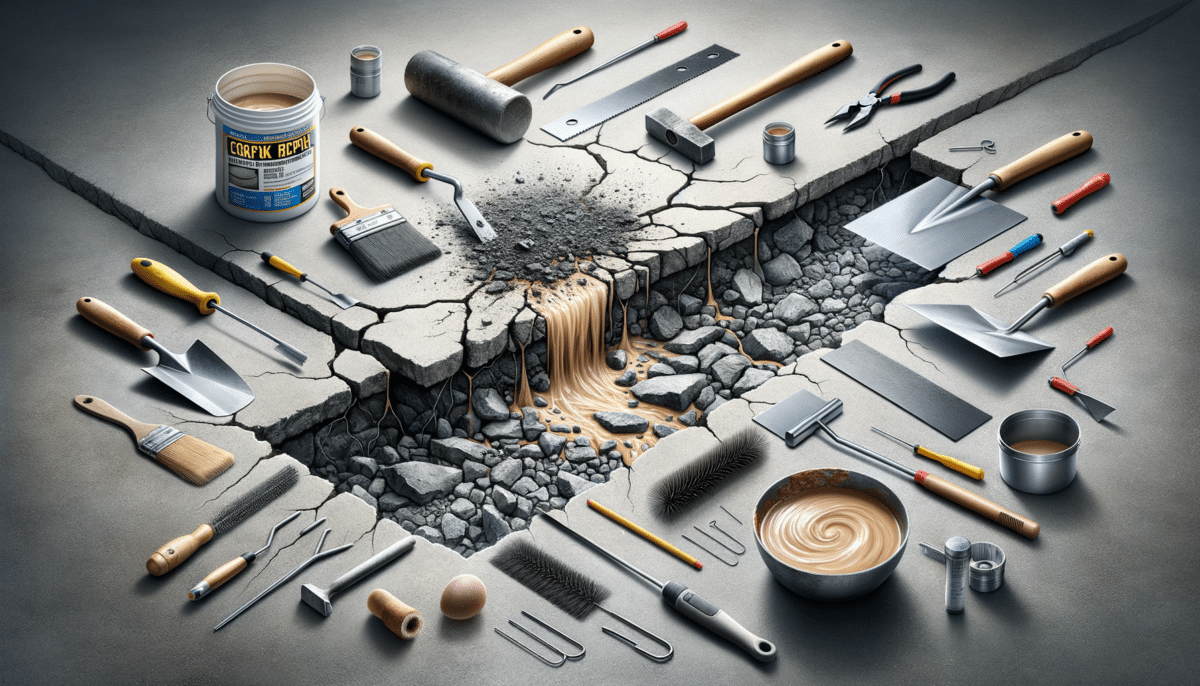The Importance of Concrete Crack Repair
Concrete is a fundamental material in construction, renowned for its durability and strength. However, even the most resilient structures can develop cracks over time due to various factors such as temperature changes, shrinkage, and external pressures. Addressing these cracks is crucial as they can compromise the structural integrity of a building if left unattended. Repairing concrete cracks not only restores the aesthetic appeal of the structure but also prevents further deterioration, which can lead to costly repairs or even structural failure.
Ignoring cracks can result in water infiltration, leading to corrosion of internal steel reinforcements. This process accelerates the degradation of the concrete, potentially causing significant safety hazards. Therefore, understanding the methods and techniques for effective concrete crack repair is essential for maintaining the longevity and safety of concrete structures.
Common Causes of Concrete Cracks
Understanding the root causes of concrete cracks is the first step in effective repair. Several factors can lead to cracking, including:
- Thermal Expansion and Contraction: Concrete expands in hot weather and contracts in cold weather, which can lead to cracks over time.
- Shrinkage: As concrete dries and hardens, it can shrink, causing tensile stress that leads to cracks.
- Overloading: Exceeding the load capacity of concrete can cause it to crack under pressure.
- Subgrade Settlement: Poorly prepared subgrade can settle over time, leading to uneven support and cracking.
Identifying the cause of the crack is essential for choosing the appropriate repair method, ensuring that the issue does not recur.
Techniques for Concrete Crack Repair
There are several techniques available for repairing concrete cracks, each suitable for different types and sizes of cracks. Some of the most common methods include:
- Epoxy Injections: Used for repairing small to medium-sized cracks, epoxy injections restore the structural integrity of the concrete by bonding the crack faces together.
- Routing and Sealing: This method involves enlarging the crack and filling it with a sealant, providing a flexible repair that can accommodate slight movements.
- Stitching: Metal staples or stitches are inserted across the crack to hold the sides together, preventing further widening.
- Concrete Resurfacing: For extensive surface cracks, a new layer of concrete or overlay can be applied to restore the surface.
Choosing the right repair technique depends on factors such as the crack’s size, location, and the cause of the crack. Consulting with a professional can help in selecting the most effective method.
Materials Used in Concrete Crack Repair
The choice of materials is crucial in ensuring the success of concrete crack repairs. Common materials include:
- Epoxy Resins: These provide excellent adhesion and strength, suitable for structural repairs.
- Polyurethane Foams: Ideal for sealing cracks in wet conditions, as they expand to fill the voids.
- Hydraulic Cement: Used for quick-setting repairs, particularly in areas subject to water exposure.
- Sealants: Flexible materials that accommodate movement, preventing water infiltration.
Each material has its specific application and benefits, and selecting the right one depends on the repair requirements and environmental conditions.
Preventive Measures for Concrete Cracks
While repairing existing cracks is essential, implementing preventive measures can help avoid future issues. Consider the following strategies:
- Proper Design and Construction: Ensure that the concrete mix design and construction practices are suitable for the intended use and environmental conditions.
- Control Joints: Incorporate control joints in the design to manage cracking due to shrinkage and thermal expansion.
- Regular Maintenance: Conduct routine inspections and maintenance to detect and address minor cracks before they become major problems.
- Waterproofing: Apply waterproof coatings or sealants to protect concrete from moisture infiltration.
By adopting these preventive measures, the longevity and durability of concrete structures can be significantly enhanced.
